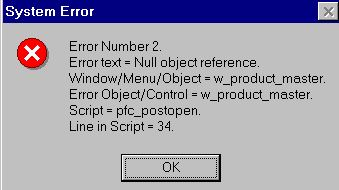Language and content are an essential part of any web and mobile app experience. Unfortunately, words aren’t usually a major consideration in product development until after the majority of a product has been designed and built. This can lead to a disjointed experience that ends up hindering users more than helping them. Words are meant to guide and inform users but a lot of times they end up confusing, irritating, or even hurting them.
There are several ways in which content and language can affect the experiences users have when they interact with a product. The simplest way that content ties to experience is the way in which it fits within a product. This may seem obvious but being aware of the space your content fills and its limitations within that space are crucial. It’ll help you avoid disastrous mistakes like this:

Beyond the way that content fits within a product lies a need to ensure that your content is straightforward, simple, and informative. There is a key balance between explaining and over-explaining that is important to consider when guiding your user through a product. A clear and concise explanation will allow your users to feel empowered, while overly descriptive and convoluted writing will leave them feeling overwhelmed and frustrated. This will likely lead users to give up on your product. For example, an overly descriptive error message littered with technical jargon is not useful to most users, but a simple error message that also provides them with options moving forward is helpful.

Additionally, it should be a goal to make content that is universally understandable. Using idiomatic language can alienate users outside of the direct cultural sphere your writing occupies. Consciously evaluating and creating content that follows guidelines relating to universal readability will lead to a more inclusive product. This will not only make your product more user-friendly but will likely expand the number of people that can functionally use your product.
Furthermore, there is a psychological and emotional interaction conveyed by the language used within a product. The voice and tone used throughout a product can be incredibly influential on how a user views and experiences a brand. The voice used should be guided by the product’s mission and its relationship with users. You don’t want your banking or insurance company to have a sarcastic, jovial, or cynical personality. Instead, you likely would prefer a helpful and informative voice.
In contrast, the tone taken throughout a product will shift depending on what is appropriate for the different situations users encounter. Using the correct tone will help prevent users from feeling alienated by interactions they encounter while using your product. For example, error messages should be positive, and reassuring to help empower your users to solve their issues. An error message that is whimsical or critical will leave a user upset with how an issue is being handled and they’ll likely feel like their time is being wasted.
Avoid using extreme language unless you’re absolutely sure the scenario in question calls for it. Choosing a tone without considering the user’s context may result in a celebratory tone marking a tragic moment or a joke being made in an inappropriate scenario. Picking a voice that matches the brand or product’s goals will help maintain consistency throughout the product’s content. Being mindful of tone will keep a product from offending or frustrating its users.

